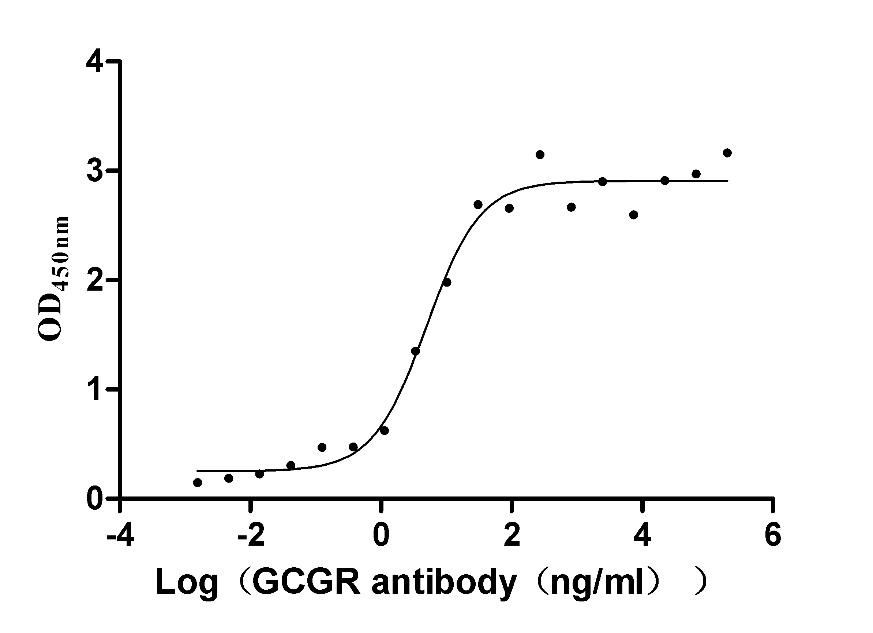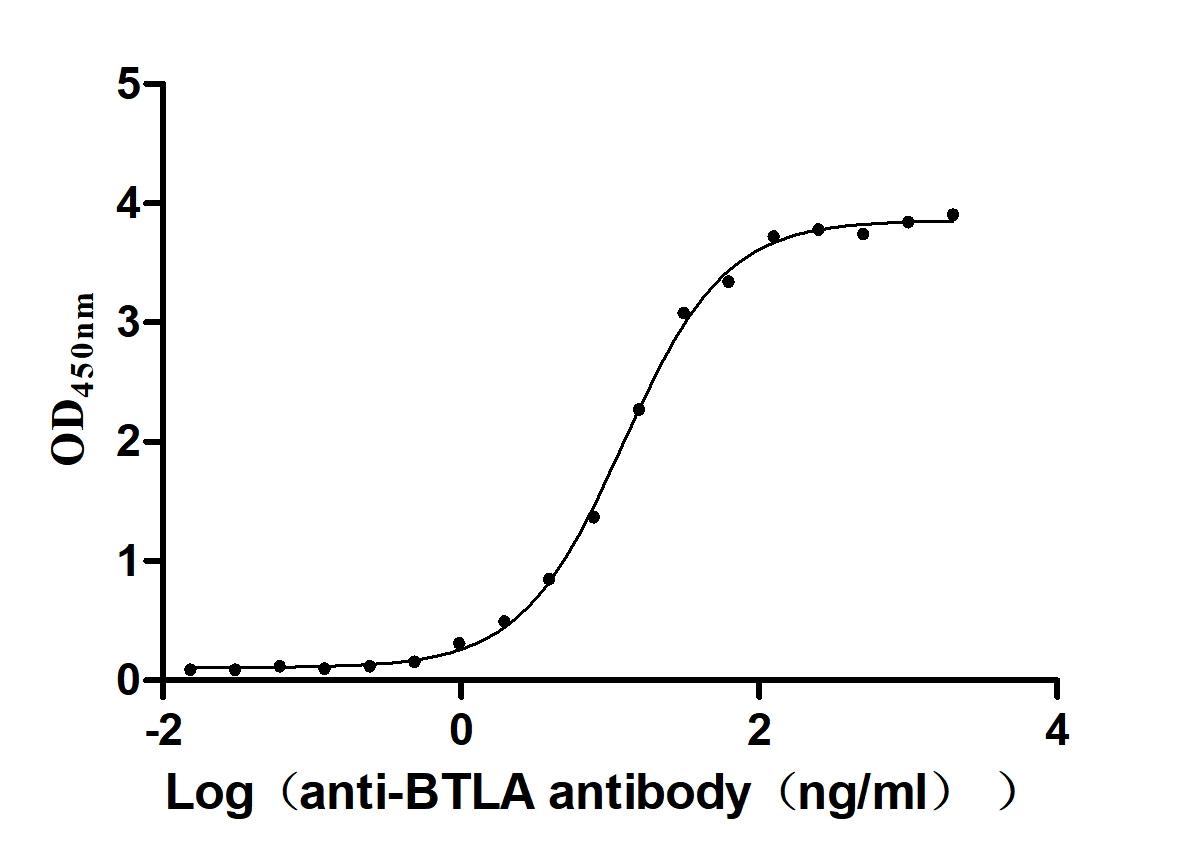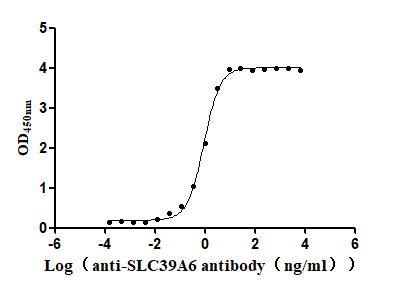Recombinant Saccharomyces cerevisiae ATPase GET3 (GET3)
-
货号:CSB-YP622442SVG
-
规格:
-
来源:Yeast
-
其他:
-
货号:CSB-EP622442SVG
-
规格:
-
来源:E.coli
-
其他:
-
货号:CSB-EP622442SVG-B
-
规格:
-
来源:E.coli
-
共轭:Avi-tag Biotinylated
E. coli biotin ligase (BirA) is highly specific in covalently attaching biotin to the 15 amino acid AviTag peptide. This recombinant protein was biotinylated in vivo by AviTag-BirA technology, which method is BriA catalyzes amide linkage between the biotin and the specific lysine of the AviTag.
-
其他:
-
货号:CSB-BP622442SVG
-
规格:
-
来源:Baculovirus
-
其他:
-
货号:CSB-MP622442SVG
-
规格:
-
来源:Mammalian cell
-
其他:
产品详情
-
纯度:>85% (SDS-PAGE)
-
基因名:GET3
-
Uniprot No.:
-
别名:GET3; ARR4; YDL100C; D2371ATPase GET3; EC 3.6.-.-; Arsenical pump-driving ATPase; Arsenite-stimulated ATPase; Golgi to ER traffic protein 3; Guided entry of tail-anchored proteins 3
-
种属:Saccharomyces cerevisiae (strain ATCC 204508 / S288c) (Baker's yeast)
-
蛋白长度:full length protein
-
表达区域:1-354
-
氨基酸序列MDLTVEPNLH SLITSTTHKW IFVGGKGGVG KTTSSCSIAI QMALSQPNKQ FLLISTDPAH NLSDAFGEKF GKDARKVTGM NNLSCMEIDP SAALKDMNDM AVSRANNNGS DGQGDDLGSL LQGGALADLT GSIPGIDEAL SFMEVMKHIK RQEQGEGETF DTVIFDTAPT GHTLRFLQLP NTLSKLLEKF GEITNKLGPM LNSFMGAGNV DISGKLNELK ANVETIRQQF TDPDLTTFVC VCISEFLSLY ETERLIQELI SYDMDVNSII VNQLLFAEND QEHNCKRCQA RWKMQKKYLD QIDELYEDFH VVKMPLCAGE IRGLNNLTKF SQFLNKEYNP ITDGKVIYEL EDKE
-
蛋白标签:Tag type will be determined during the manufacturing process.
The tag type will be determined during production process. If you have specified tag type, please tell us and we will develop the specified tag preferentially. -
产品提供形式:Lyophilized powder
Note: We will preferentially ship the format that we have in stock, however, if you have any special requirement for the format, please remark your requirement when placing the order, we will prepare according to your demand. -
复溶:We recommend that this vial be briefly centrifuged prior to opening to bring the contents to the bottom. Please reconstitute protein in deionized sterile water to a concentration of 0.1-1.0 mg/mL.We recommend to add 5-50% of glycerol (final concentration) and aliquot for long-term storage at -20℃/-80℃. Our default final concentration of glycerol is 50%. Customers could use it as reference.
-
储存条件:Store at -20°C/-80°C upon receipt, aliquoting is necessary for mutiple use. Avoid repeated freeze-thaw cycles.
-
保质期:The shelf life is related to many factors, storage state, buffer ingredients, storage temperature and the stability of the protein itself.
Generally, the shelf life of liquid form is 6 months at -20°C/-80°C. The shelf life of lyophilized form is 12 months at -20°C/-80°C. -
货期:Delivery time may differ from different purchasing way or location, please kindly consult your local distributors for specific delivery time.Note: All of our proteins are default shipped with normal blue ice packs, if you request to ship with dry ice, please communicate with us in advance and extra fees will be charged.
-
注意事项:Repeated freezing and thawing is not recommended. Store working aliquots at 4°C for up to one week.
-
Datasheet :Please contact us to get it.
靶点详情
-
功能:ATPase required for the post-translational delivery of tail-anchored (TA) proteins to the endoplasmic reticulum. Recognizes and selectively binds the transmembrane domain of TA proteins in the cytosol. This complex then targets to the endoplasmic reticulum by membrane-bound receptors GET1 and GET2, where the tail-anchored protein is released for insertion. This process is regulated by ATP binding and hydrolysis. ATP binding drives the homodimer towards the closed dimer state, facilitating recognition of newly synthesized TA membrane proteins. ATP hydrolysis is required for insertion. Subsequently, the homodimer reverts towards the open dimer state, lowering its affinity for the GET1-GET2 receptor, and returning it to the cytosol to initiate a new round of targeting. Cooperates with the HDEL receptor ERD2 to mediate the ATP-dependent retrieval of resident ER proteins that contain a C-terminal H-D-E-L retention signal from the Golgi to the ER. Involved in low-level resistance to the oxyanions arsenite and arsenate, and in heat tolerance.
-
基因功能参考文献:
- Get3 functions as a redox-regulated chaperone, effectively protecting eukaryotic cells against oxidative protein damage. PMID: 25242142
- The crystal structure of the Get3-Get4-Get5 complex in an ATP-bound state is presented. PMID: 24727835
- Get3 moves reversibly to deposition sites for protein aggregates, hence supporting the sequestration of tail-anchored proteins under conditions that prevent tail-anchored protein insertion. PMID: 23203805
- ATP specifically induces multiple conformational changes in Get3 that culminate in its ATPase activation through tetramerization PMID: 23610396
- Get1 uses two interfaces to stabilize the open dimer conformation of Get3. PMID: 22684149
- Interaction surface and topology of Get3-Get4-Get5 protein complex, involved in targeting tail-anchored proteins to endoplasmic reticulum PMID: 22190685
- crystal structures of Get3 in complex with cytosolic domain of Get1 and Get2 in different states; data show Get1 and Get2 can bind simultaneously to Get3;docking to Get1/2 complex allows for conformational change in Get3 required for TA protein insertion PMID: 21719644
- Data provide further evidence for a model in which Get4/5 operates upstream of Get3 and mediates the specific delivery of a TA substrate. PMID: 20554915
- the conformational changes to switch the Get3 between the open and closed conformations may facilitate the membrane insertions for TA proteins PMID: 19956640
- the Get4-Get5 complex interacts with Sgt2, Get3, and Ydj1 PMID: 20106980
- Arr4p antagonizes the function of Gef1p PMID: 16260785
- Study shows that Get3, the yeast homolog of the Tail-anchored(TA)-interacting factor Asna1/Trc40, specifically recognizes transmembrane domains of TA proteins destined for the secretory pathway. PMID: 18724936
- crystals od Get3 diffracted to 2.7 A resolution using a synchrotron X-ray source PMID: 19407384
- crystal structures of yeast Get3 in 'open' (nucleotide-free) and 'closed' (ADP.AlF(4)(-)-bound) dimer states PMID: 19675567
- determined three crystal structures in apo and ADP forms from Saccharomyces cerevisae (ScGet3-apo) and Aspergillus fumigatus (AfGet3-apo and AfGet3-ADP). PMID: 19706470
- Structural and functional analysis of yeast Get3 provides a molecular model for nucleotide-regulated binding and release of tail-anchored proteins during targeting to the ER membrane. PMID: 19675567
显示更多
收起更多
-
亚细胞定位:Cytoplasm. Endoplasmic reticulum. Golgi apparatus. Note=GET1 and GET2 are required for targeting GET3 to the endoplasmic reticulum.
-
蛋白家族:ArsA ATPase family
-
数据库链接:
KEGG: sce:YDL100C
STRING: 4932.YDL100C
Most popular with customers
-
Recombinant Human Glucagon receptor (GCGR), partial (Active)
Express system: Mammalian cell
Species: Homo sapiens (Human)
-
Recombinant Human Claudin-6 (CLDN6)-VLPs (Active)
Express system: Mammalian cell
Species: Homo sapiens (Human)
-
Recombinant Human Microtubule-associated protein tau (MAPT) (Active)
Express system: Mammalian cell
Species: Homo sapiens (Human)
-
Recombinant Human IL12B&IL12A Heterodimer Protein (Active)
Express system: Mammalian cell
Species: Homo sapiens (Human)
-
Express system: Mammalian cell
Species: Homo sapiens (Human)
-
Recombinant Human Cell adhesion molecule 1 (CADM1), partial (Active)
Express system: Mammalian cell
Species: Homo sapiens (Human)
-
Recombinant Human B- and T-lymphocyte attenuator(BTLA), partial (Active)
Express system: Mammalian cell
Species: Homo sapiens (Human)
-
Recombinant Macaca fascicularis Zinc transporter ZIP6 isoform X1(SLC39A6),partial (Active)
Express system: Baculovirus
Species: Macaca fascicularis (Crab-eating macaque) (Cynomolgus monkey)



-AC1.jpg)
-AC1.jpg)















